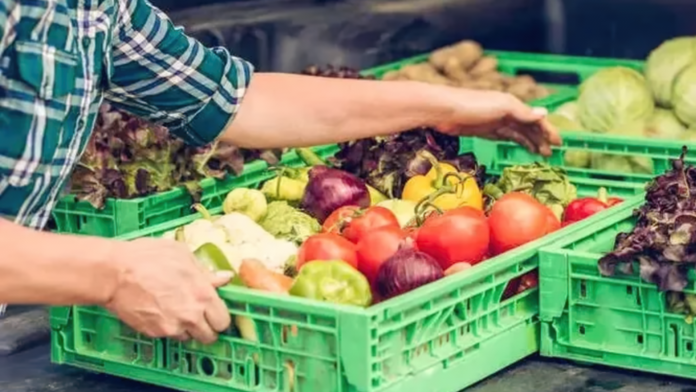Wastage in the food supply chain is a significant issue with far-reaching implications. From farm to fork, there are various stages where food can be wasted, leading to environmental, economic, and social consequences. However, by implementing effective strategies, businesses can make a significant impact in reducing food wastage.
Reducing wastage across the food supply chain is not only an ethical imperative but also a smart business strategy. The food industry faces significant challenges in managing and minimizing wastage, from agricultural production and processing to distribution and consumption. Food wastage not only impacts the environment but also represents a loss of valuable resources and financial implications for businesses.
Reducing wastage in the food supply chain is of paramount importance as it helps minimize food waste, decrease costs, improve sustainability, and ensure efficient resource utilization. Reducing wastage in the food supply chain is of great importance for several reasons:
1. Environmental Impact: Food wastage contributes to environmental degradation. When food is wasted, all the resources that went into producing, processing, and transporting it are also wasted. This includes water, energy, and agricultural inputs. By reducing wastage, we can minimize the environmental footprint of the food industry and conserve valuable resources.
2. Food Security: With a growing global population, ensuring food security is crucial. Wastage in the food supply chain means that a significant portion of food that could have been consumed is lost. By reducing wastage, we can make more food available for consumption, thereby improving food security and reducing hunger.
3. Economic Efficiency: Food wastage represents a substantial economic loss for businesses. Wasted food translates to wasted investments in production, transportation, and storage. By minimizing wastage, businesses can improve their profitability and efficiency, leading to better economic outcomes.
4. Social Responsibility: Reducing food wastage is a socially responsible practice. It aligns with the values of sustainability, responsible consumption, and ethical business practices. It demonstrates a commitment to reducing inequalities and ensuring that food resources are distributed more equitably.
5. Ethical Considerations: Wasting food when millions of people suffer from hunger and malnutrition is ethically unacceptable. By taking steps to reduce wastage, we can contribute to a more just and equitable society where food resources are utilized effectively to meet the needs of all.
6. Reputation and Consumer Perception: Consumers are increasingly conscious of sustainability and waste reduction. Businesses that actively work to reduce wastage in their supply chains enhance their reputation and attract environmentally-conscious customers. This can lead to increased customer loyalty and support.
8 ways to minimize wastage across the food supply chain
1. Optimize Inventory Management
Implementing robust inventory management systems and practices is crucial for minimizing food wastage. Accurate forecasting, proper storage, and regular inventory audits help businesses maintain optimal stock levels, reduce overstocking, and prevent spoilage or expiration of food items.
2. Improve Supply Chain Visibility
Enhancing visibility across the supply chain enables better coordination and communication between stakeholders. Utilize technologies like tracking systems, sensors, and real-time data analytics to monitor inventory, transportation, and storage conditions. This allows for early identification of potential issues and prompt action to prevent wastage.
3. Enhance Collaboration with Suppliers
Develop strong relationships with suppliers and foster open communication. Encourage suppliers to implement sustainable practices and share information on inventory levels, quality, and shelf life. Collaborative efforts can lead to improved forecasting accuracy, reduced overordering, and better management of perishable items.
4. Implement Quality Control Measures
Ensure strict quality control at every stage of the supply chain to identify and remove damaged or substandard products. Establish clear quality standards and protocols for inspection, sorting, and grading to minimize wastage caused by low-quality or unsuitable products.
5. Optimize Packaging
Rethink packaging materials and design to minimize waste generation. Use sustainable and eco-friendly packaging options that are recyclable or biodegradable. Optimize package sizes to reduce excess material and consider innovative packaging solutions that extend the shelf life of perishable items.
6. Educate and Train Employees
Provide comprehensive training programs to employees to raise awareness about food wastage and its impact. Train staff in proper handling, storage, and preservation techniques to minimize spoilage. Encourage employees to contribute ideas and suggestions for waste reduction initiatives.
7. Implement Donation and Redistribution Programs
Partner with local food banks, charities, or organizations that can redistribute surplus food to those in need. Implement donation programs to redirect edible food that may otherwise go to waste. Establish clear guidelines and processes for safe and efficient donation and redistribution practices.
8. Educate Consumers
Promote consumer awareness and engagement to reduce food wastage. Educate customers about proper food storage, expiration dates, and ways to minimize wastage at home. Provide recipe ideas for using leftovers or slightly blemished produce, encouraging consumers to make the most of their purchases.
Final Thoughts:
Reducing wastage across the food supply chain is a collective effort that requires commitment from all stakeholders. With right efforts and strategies, businesses can make a significant positive impact on both their operations and the environment, fostering a more efficient and sustainable food supply chain for the future.





